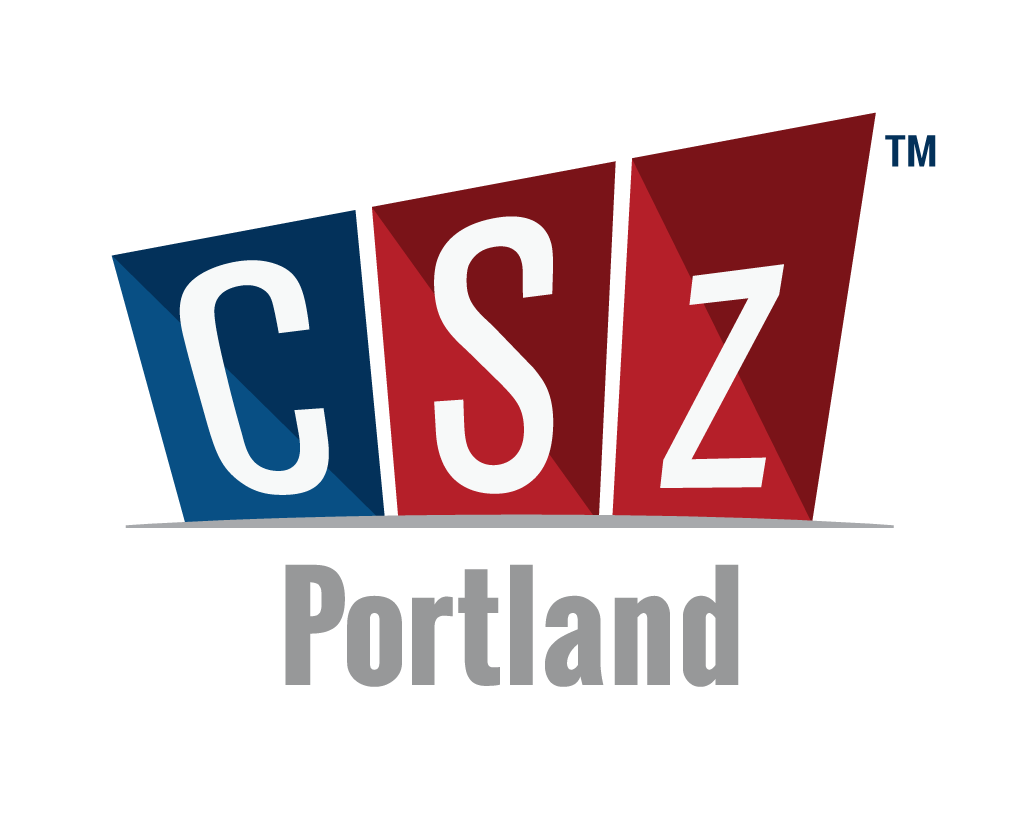I Was Used For Design Thinking Purposes
/Shimon Shmueli set me up.
He’s the leader of Touch 360, a “strategy, innovation and design” company; he’s got a high-tech industry resume several times longer than my arm, and he was getting ready to speak at an Applied Improvisation Network regional gathering in Portland.
My contribution was to lead a series of warm-ups to the evening focused on design thinking.
I was walking to the front of the room, and Shimon took me aside and told me he thought I should lead the group in Sun and Moon.
Sun and Moon is a simple and profound activity. Participants stand in a circle, and are asked to pick a “sun” and a “moon” from among the other people. They are not to let on who they’ve picked; it’s a secret. When the game starts, they are to move quickly to “become equidistant” from their sun and moon, as fast as they can, and if their targets move on them, they have to keep moving. Chaos ensues. (There’s also a second round, but it’s not germane to the story.) Shimon had seen me run the game at a Portland State University class he teaches on entrepreneurship.
We ran the game, it was fun, and the very bright group of participants completely got the “jolts” of understanding that Sun and Moon offers.
Following another exercise, Shimon started his presentation, Creativity by Emergence and Leadership.
I can’t completely do his thesis justice, but let me try:
Doing something truly new requires intentional creativity.
Improvisation is great for
- scenario playing and interaction prototyping
- brainstorming via emotional uplift and allowing failure
- demonstrating
But if a new product or service or other innovation is a story, does improvisation do the job?
Improvisation is:
- Process, not product
- Limited in its resources
- Sequential, not parallel
Shimon compared improvisation to the TV show Survivor:
- no overall leaders
- simple rules
- safer in large groups
- steer toward consensus
- unpredictable, internally and externally
- players avoid “visibility” (they don’t want to stand out from the group – publicly)
- common objectives fall apart fast
For design, and true, intentional creativity, you need a story line – setting the stage, anchor points, climax and the end – along with coloration.
Shimon also compared improvisation to swarm theory, and showed us videos of a very large, very active flock of birds. If it’s “beautiful” or “cool”, it’s because we (the observers) are applying those values. There is no creativity in what is happening inside the flock. The birds are each reacting to the moves of a group of birds in their immediate vicinity, and are continuously adjusting to aim for the center of that group.
It’s just like Sun and Moon, said Shimon, where the individual participants where simply responding to a couple of simple rules and the moves of their “sun” and “moon” (the birds in their immediate vicinity).
And that’s why we needed to play Sun and Moon. I was used.
Is he right? Is what we do just a series of responses that do not indicate intentional creativity?
Sometimes, yes. But I like to think there’s more to it than that.
Add a few constraints to improv, including some rules, styles (coloration) and a goal, and you can tell a story.
Even if improv performance is not your goal, accepting an improvisational mindset is a great way to lead to intentional creativity – build a great team and turn them loose – with constraints and a goal.
If all you are doing is reacting to the people nearest you, maybe you are just flying around in a flock. Or playing Sun and Moon. It’s fun, it might look beautiful, but it’s not creating anything.
I was used.


